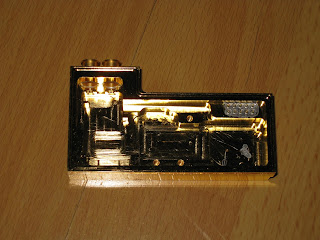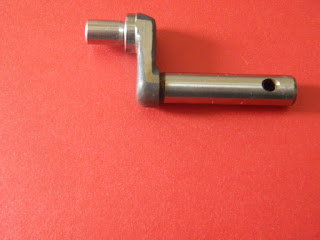DISTINGUISHING CHARACTERISTICS
In a
number of respects, robots are like numerically controlled automated machine
tools,wire cutting, die casting, etc. Cnc machining such as an automated lathe, since they are both reprogrammable to
produce a number of different objects. What distinguishes robots is their
flexibility regarding both range of tasks and motion. In one typical
manufacturing application, robots move parts in their various stages of
completion from one automated machine tool to the next,the system of robots and
machine tools making up a flexible manufacturing workcell. Robots are
classified as soft automata, whereas automated machine tools are classified as
hard automata. The Japanese Industrial Robot Association also classifies
manually operated manipulators and nonreprogrammable, single-function
manipulators as robots, and one must bear this in mind when comparing data on
robot use between Japan and the United States.
Since robots are defined by their capacity to move objects or tools
through space, key issues in robotic control are location and movement,
referred to in the industry as kinematics and dynamics. Cnc machining The position of an
object in a three-dimensional space can be defined relative to a fixed point
with three parameters via the Cartesian coordinate system, indicating placement
along x, y, and z axes. The orientation of an object requires three
additional parameters, indicating
rotation on these axes. These parameters are referred to as degrees of freedom.
Together these six parameters and the movement among them make up the data of
kinematic control equations.
Robots carrying out simpler tasks may operate
with fewer than six degrees of freedom,
but robots may also operate with more than six, which is referred to as
redundancy. Redundancy gives a robot greater mobility, enabling it to more
readily work around obstructions and to choose among a set of joint positions
to reach a given target in less time.
Two
types of joints are commonly used in robots, the prismatic or sliding joint,
resembling a slide rule, and the re volute joint, a hinge. The simplest type of
robot to control is one made up of three sliding joints, each determining
placement along a Cartesian axis. Robots made solely of revolute joints are
more complex to control, in that the relation of joint position to control
parameters is less direct. Other robots use both types of joints. Among these,
a common type uses a large sliding joint for vertical placement of an arm made
of revolute joints. The vertical rigidity and horizontal flexibility of such
robots make them ideal for heavy assembly work (this configuration is referred
to as SCARA for Selectively Compliant Arm for Robot Assembly). Robots may also
be made of a system of arms each with restricted movement (i.e., with
relatively few degrees of freedom) but which together can perform complex
tasks. These are referred to as distributed robots. Such robots have the
advantage of high speed and precision, but the disadvantage of restricted range
of movement.
Robots are activated by hydraulic, pneumatic, and electrical power.
Electric motors have become increasingly small with high power-to-weight
ratios, enabling them to become the dominant means by which robots are powered.
The hand of a robot is referred to in the industry as an end effector. End
effectors may be specialized tools, such as spot welders or spray guns, or more
general-purpose grippers. Common grippers include fingered and vacuum
types.
One
of the central elements of robotics control technology involves sensors. It is
through sensors that a robotic system receives knowledge of its environment, to
which subsequent actions of the robot can be adjusted. Sensors are used to
enable a robot to adjust to variations in the position of objects to be picked
up, to inspect objects, and to monitor proper operation. Among the most
important types are visual, force and torque, speed and acceleration, tactile,
and distance sensors. The majority of industrial robots use simple binary
sensing, analogous to an on/off switch. This does not permit sophisticated feedback
to the robot about how successfully an
operation was performed. Lack of adequate feedback also often requires
the use of guides and fixtures to constrain the motions of a robot through an
operation, which implies substantial inflexibility in changing operations.
Robots may also be able to adjust to
variations in object placement without the use of sensors. This is enabled by
arm or end effector flexibility and is referred to as compliance. Robots with
sensors may also make use of compliance.
Robots
are programmed either by guiding or by off-line programming. Most industrial
robots are programmed by the former method. This involves manually guiding a
robot from point to point through the phases of an operation, with each point stored in the
robotic control system. With off-line programming, the points of an operation
are defined through computer commands. This is referred to as manipulator level
off-line programming. An important area of research is the development of
off-line programming that makes use of higher-level languages, in which robotic
actions are defined by tasks or objectives. Cnc machining Robots may be programmed to move through a specified continuous path
instead of from point to point. Continuous path control is necessary for
operations such as spray painting or arc welding a curved joint.
Programming also requires that a robot be
synchronized with the automated machine tools or other robots with which it is
working. Thus robot control systems are generally interfaced with a more
centralized control system.






